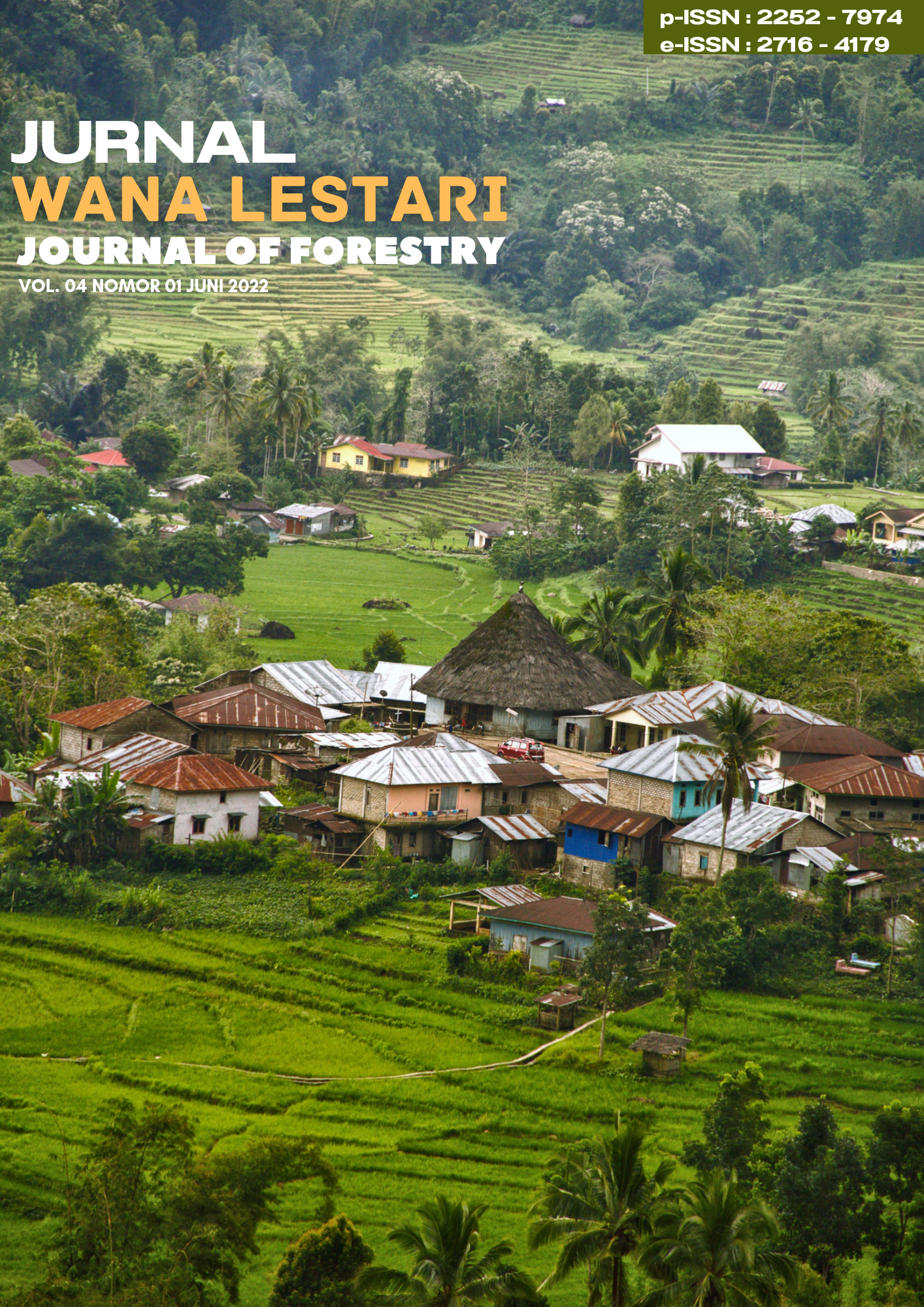IMPLEMENTATION OF PHYSICAL SCARIFICATION TECHNIQUE THROUGH FUEL-FLUSH METHOD AND DEPTH OF SEED SOWING IN BREAKING SEED DORMANCY AND SEED GROWTH OF CANARI (Canarium indicum Leenh.)
Abstract
Walnut (Canarium indicum Leenh.) is one of the typical plant species of East Nusa Tenggara which is included in the leading non-timber forest product (NTFP) commodity. The generative propagation of walnut plants has problems due to the long dormancy period of the seeds so that preliminary treatment is needed. Burn-flush technique and depth of seed is one of the physical dormancy breaking techniques. This technique is expected to accelerate the breaking of dormancy and seed germination. This research was conducted to determine the effect of burn-flush scarification on the breaking of dormancy of walnut seedlings (Canarium indicum Leenh.) The method used was a Randomized Block Design (RAK) with a combination of treatment levels, depth of seed sowing and length of burning time, s0t0 ( sowing 0 cm + without burning), s0t1 (0 cm sowing + burning 5 minutes), s0t2 (0 cm sowing + burning 10 minutes), s1t0 (2 cm sowing + without burning), s1t1 (2 cm sowing + burning 5 minutes), s1t2 (2 cm sowing + burning 10 minutes), s2t0 (4 cm sowing + no burning), s2t1 (4 cm sowing + burning 5 minutes), and s2t2 (4 cm sowing + burning 10 minutes). The results of this research indicate that there is no interaction between the depth of seed sowing and the length of the burning time. The level of depth of seed sowing gave insignificant results on all observation variables, while the length of time of burning had a very significant effect on all observed variables. Single factor t1 (burning time of 5 minutes) is the best treatment because shows a high influence on several observation variables.
Downloads
Copyright (c) 2022 Wana Lestari

This work is licensed under a Creative Commons Attribution-ShareAlike 4.0 International License.

 Maria Elisabet L. Ngalu(1*)
Maria Elisabet L. Ngalu(1*)







